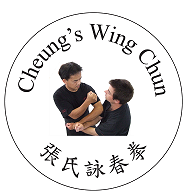The Three Gs of Wing Chun
By popular western misinterpretation, there is often confusion in using the terms Gung Lik (功力), Qi Gung (氣功), Fat Guin (發勁) in association with ‘energy’. To set the record straight:
Gung Lik (功力)
This is actually a complementary phrase used between professional and student. It is a verbal measure of the student’s ability made by peers of the same profession much like a verbal ‘certification’ that the student have become highly skill. In the context of Wing Chun martial art, its use is particularly meaningful if the peer group is from your Sifu’s generation (Si-Bai, 師伯) or his Sifu (Si-Gong, 師公) and is sincerely given, as this would imply that your Sifu have taught you well.
Gung Lik (功力) is only positive in use as in good Gung Lik(好功力); whereas Kung fu (功夫) can be both positive and negative depending on the adjective.
Qi Gung (氣功)
This is in fact another martial art form with its core teaching centred on the way we breathe, the flow of ‘energy’ and on meditation. Its focus is to tap into the subconscious that controls the internal organs. Confusion (from a western perspective) between Wing Chun and Qi Gung (氣功) arises in how breathing and the term ‘energy’ is used between the two arts.
The art of Qi Gung places great emphasis on regular long deep breathing exercises. In Wing Chun, the nearest similarity is when performing the Wing Chun forms and in making sure to exhale upon hitting or striking the opponent: though inhale calmly when defending.
Regarding the term ‘energy’, Qi Gung refers to magnetism, electricity, gaseous exchange and heat while some will also add aura to this description. In Wing Chun, ‘energy’ is firmly grounded in physics (potential and kinetic energy) and in Newton’s laws of motion: (a) Force equals Mass times the Acceleration and (b) For every action there is an equal and opposite reaction.
Fat Guin (發勁)
This two words are not used very often, because it sound rude when mispronounce it. However, these words is a phrase that attempt to describe movement with intention. To best illustrate, the opposite term is Say Lik (死力) which directly translated means ‘dead energy’. In Wing Chun content this refers to total commitment with no room to change like someone (the dead weight) rushing in with a flying kick. The term Fat Guin (發勁) is not quite the opposite such as ‘live weight’ but instead focuses more on having option to change and of being less committed until as the very last moment where potential energy is transferred to kinetic, like a spring or a coiled snake striking. This concept is well hidden within Wing Chun Sim Lim Tao, first form.
